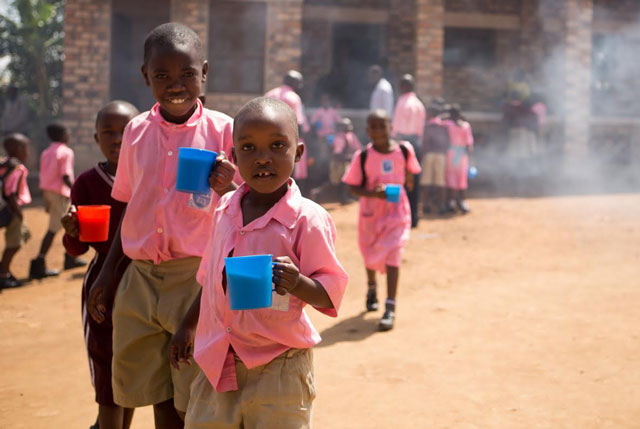
COMMENT | Bijoy Varghese | Amidst the Covid-19 pandemic, there has been a phased reopening of schools in Uganda, beginning with candidate classes. This offers an opportunity to look at all factors needed to ensure the re-opening goes according to plan, including their nutrition, given the nature of the disease that attacks the immune system.
A couple of months ago, in an interview with a local daily, the Executive Director for Dairy Development Authority (DDA), Dr Michael Kansiime recommended that schools should introduce milk on their feeding programs as one way of increasing milk consumption in Uganda and also for its nutritional benefits for growing children.
In 2018, Uganda’s milk consumption stood at 63 litres per capita against the recommended World Food Program figure of 200 litres annually, having increased from 25 litres in 1986. In Kenya, milk consumption stands at 110 litres per capita, the highest in sub-Sahara Africa.
In one way to encourage more consumption, many schools have partnered with milk processing companies such as Pearl Dairy Farms Ltd (Lato Milk) to provide milk for their scholars. Lato Milk is currently supplying its popular naturally flavoured milk varieties to different schools.
According to nutritionists, animal proteins are very crucial in early childhood development and adolescence. It is important for children to regularly have eggs, milk, and meat as they provide the highest quality protein sources needed to build and maintain muscles, organs, and their immune system. Animal proteins, fruits and vegetables are also sources of minerals and vitamins crucial for a child’s growth and development.
Although the government has issued guidelines for school feeding programs, there is no clear cut policy on what and how to feed their pupils. In 2013, the Ministry of Education and Sports (MOES) produced the Guidelines on School Feeding and Nutrition Interventions with direction on how to increase access to parent-led school feeding and improve food diversity by procurement and consumption of various nutritious foods.
However, the guidelines do not specify what schools should include on their everyday feeding menu and hence most schools opt for the cheap and readily available maize flour and beans formula. As a result, there have been numerous cases when students complain about the inadequacy of this routine menu, notably a lack of animal protein.
During the 1st Eastern and Southern Africa School Milk program conference held in Uganda in 2005, Dr Florence Masembe Kasirye, the Dairy Development Manager at DDA in her paper Efforts to Introduce Milk in School Feeding Programs in Uganda’s said there was a strong link between learning and school children’s health and nutrition. She said improving children’s nutrition and health is fundamental in their academic performance.
According to Nirav Patel, the head of Sales at Pearl Dairy Farms Limited, milk is an especially important dietary component for young people as it helps in supplementing other foods.
“With a glass of milk (200ml) one is assured to get calcium, protein, iodine, potassium, phosphorus and vitamins B2 and B12. Lato Milk has well packed small sized flavoured milk that is easy to carry to school. We are dedicated to producing high quality dairy products that are accepted within East Africa and on the global market,” he said.
Over the years, Uganda has invested in overarching integrated nutrition strategies since 1996 to address malnutrition, which remains largely prevalent according to Uganda Bureau of Statistics.
These strategies include the 1996 Uganda National Plan of Action for Nutrition (UNPAN), the 2003 Uganda Food and Nutrition Policy (UNFP), and the Uganda Nutrition Action Plan (UNAP) 2011-2016. However the country still does not have a specific school feeding program policy that will ensure that while in schools, these children are fed on well balanced and nutritious meals.
****

The writer Bijoy Varghese is the Pearl Dairy Farms Limited General Manager for Uganda
 The Independent Uganda: You get the Truth we Pay the Price
The Independent Uganda: You get the Truth we Pay the Price


